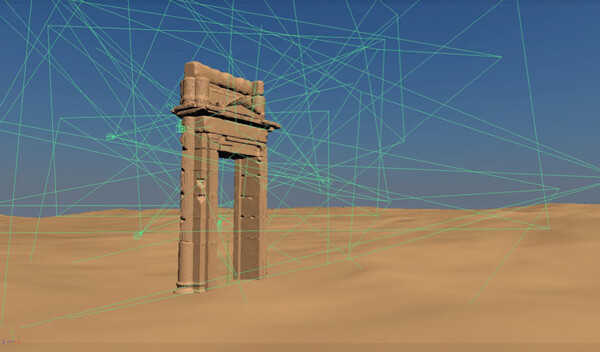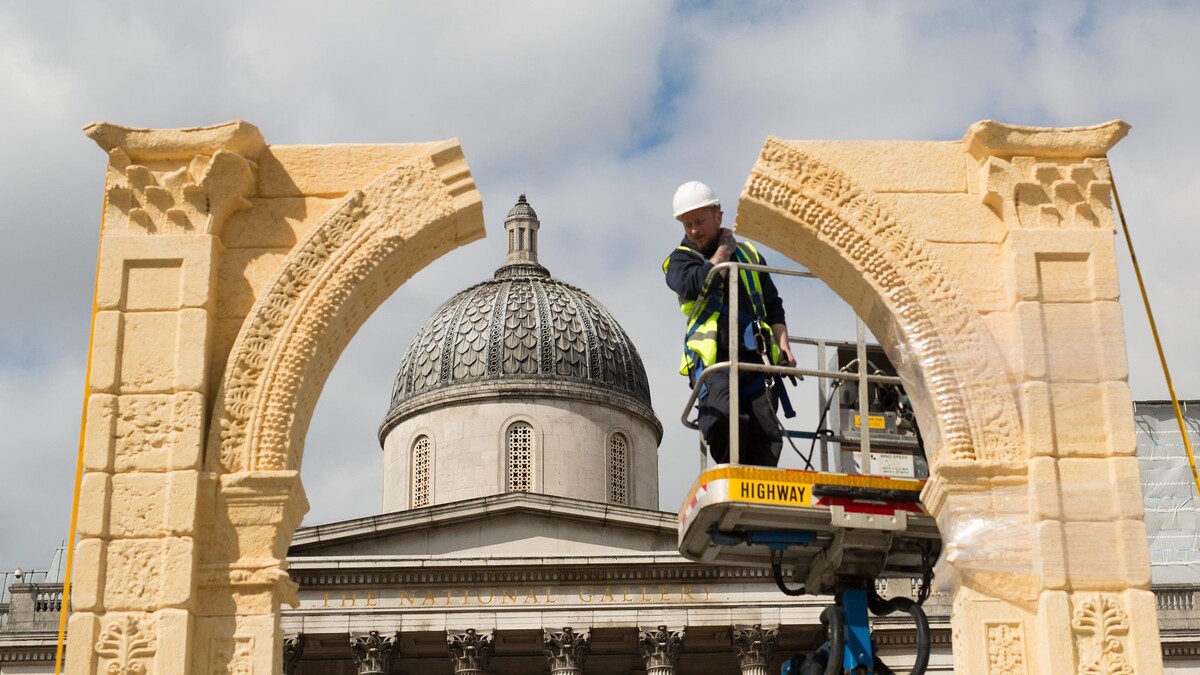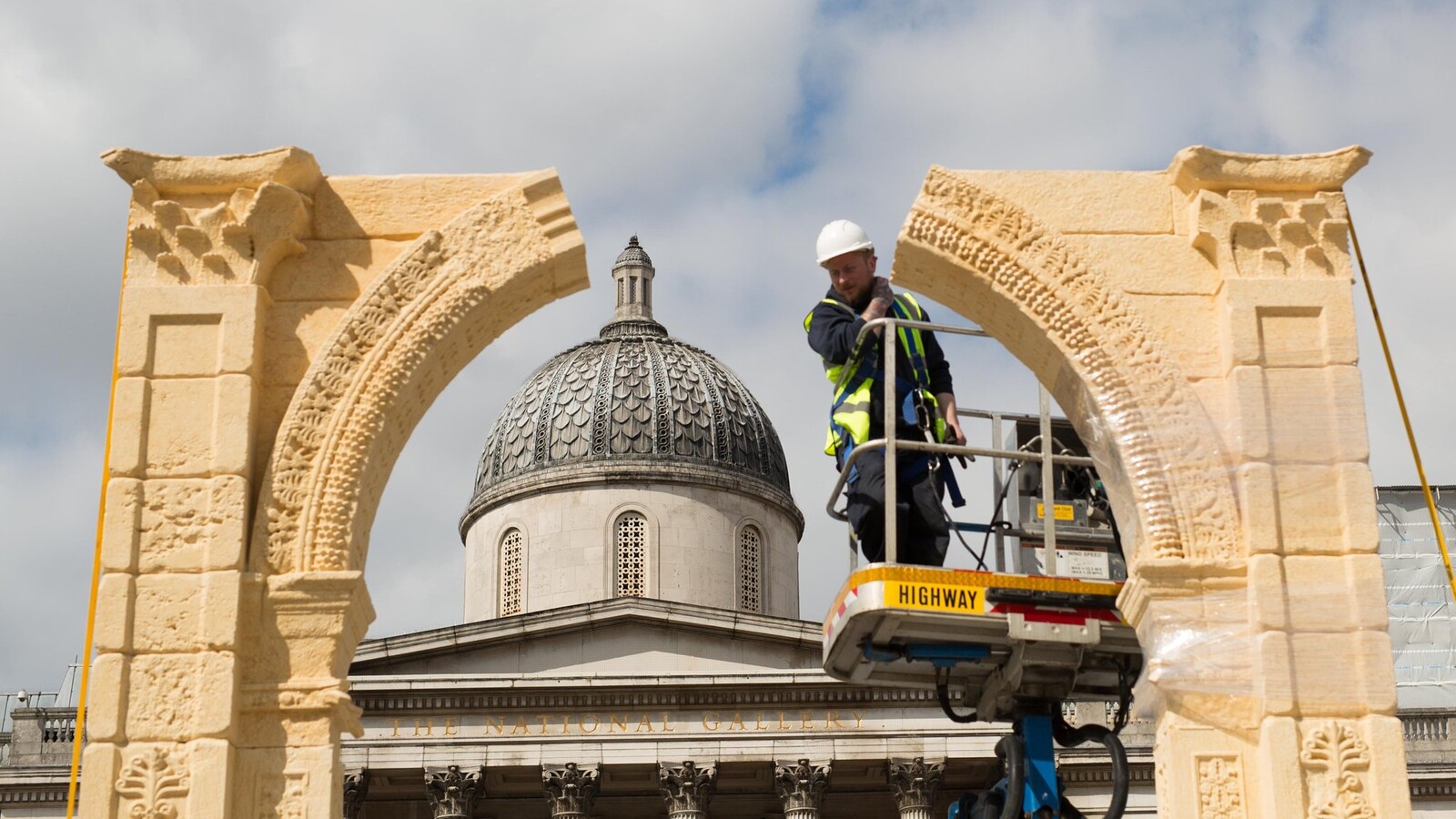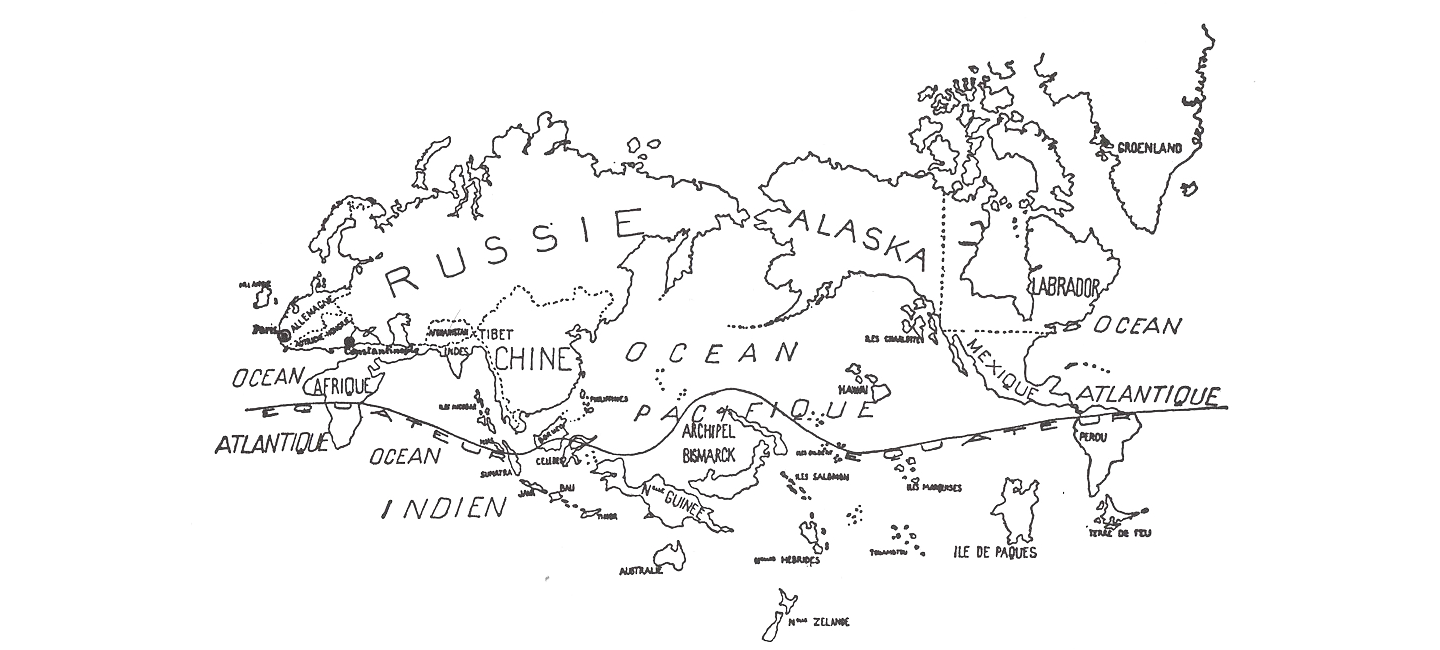Earlier this year, I visited Doha’s Museum of Islamic Art. The I.M. Pei-designed building is immediately stunning in its synthesis of different Islamic styles, particularly the muqarnas of its interior dome. What stuck with me was the enviable breadth and quality of works on display, which brought together art and artefacts from across the Muslim world, with an emphasis on Iran and South Asia. And especially how, unlike the Elgin Marbles and Rosetta Stone at the British Museum, the Nefertiti bust at Berlin’s Neues Museum, or the Met’s entire Islamic wing, these objects somehow felt right, as if they’d somehow come home. I thought about the reports that a good portion of the objects looted from Iraq, and more recently, Syria now end up here, or in other Khaleeji collections, and that perhaps it’s not the worst thing in the world.
Now imagine an encyclopedic museum filled with a similar collection drawn from the history of Christian civilizations. (Perhaps the eye trips at this phrase, given the assumption that “civilization” without any modifier implies Christianity, kind of like describing a person as White.) Somewhere heavily Christian but relatively peripheral to that tradition, like Port Moresby, Papua New Guinea, or perhaps Valletta, Malta if you wanted a city closer to the birthplace of the religion. It’s a faintly ludicrous supposition, but Qatar’s links to the treasures of the wider Islamic world are arguably just as tenuous. Yet the museum’s website boasts all the weaponized first person plurals that you might expect to find mortaring such an enterprise. “Safeguarding our material culture is essential to sustaining our heritage,” for example, nods to the idea of the global cultural commons that underwrites the encyclopedic or universal museum, even as it begs the questions of whose culture, and whose heritage.1
At first blush, it is hard to argue against the idea of the global commons. Petrowaste, running the gamut from plastic microbeads to oil spills, is clogging up the Earth’s oceans and asphyxiating its denizens. The ozone layer is increasingly depleted, and that’s to say nothing of industry’s devastating effects on terra firma. It follows that only through countries and extragovernmental organizations working together on an international scale can such an extractive tragedy of the commons be avoided, and the world’s natural resources preserved for future generations. Extend the idea to a more immaterial understanding of the global commons predicated on a shared cultural heritage, however, and things begin to approach the stickiness of frog saliva.2
The problem with the idea of the global cultural commons is that it assumes a global cultural patrimony. As a concept, it boasts all the feelgood solidaristic vibes of Woodie Guthrie’s protest folk classic “This Land is Your Land.” Notably, Guthrie took the tune from an older Carter Family tune called “When the World’s on Fire,” yet ironically for much of the world’s population, the world never stopped burning. And like Guthrie’s song, the idea of a global cultural patrimony conveniently elides the asymmetric power dynamics, deprivations, and outright loot-and-pillaging of settler and other types of colonialism. Ironically for a song that explicitly criticizes private property and the enclosure of the commons, its refrain of “this land was made for you and me” suggests the Christian Zionist slogan of “a land without people for a people without a land.” Except like the Palestinians that once inhabited modern Israel, America—among many other states—is built on the systematic eradication, in one form or another, of a native population. A more contemporary analogy might be people who rush to write “First!” in comment sections, ignoring those in the greys—those without enough cultural capital; those who might be unverified or not even recognized as human.
In 1968, folk singer and social activist Pete Seeger met Lakota Sioux chief Henry Crow Dog, who pointed out the same disparity.3 Chagrined, Seeger immediately added a verse to his version of the song that looked to represent a Native American perspective: “This land is your land, but it once was my land / Until we sold you Manhattan Island / You pushed our Nations to the reservations; This land was stole [sic] by you from me.” Were he to write it today, one hopes Seeger might consider not speaking for—from the lived experiences of—others under the rubric of inclusivity and diversity. Despite all this, I do love the song, even as I’m surprised to find that the title is not, in fact, “This Land is Our Land.” Because implied here, again, are those weaponized first person plurals: if it’s yours and mine, then surely it must be for everyone? For us? And who is us?
Now consider public space in an American city. It might be best understood not by who it includes but those it seeks to keep out, from the homeless to those playing music too loudly, walking dogs, drinking in public, or just dressed the wrong way. Depending on who you are, doing some things in public may even get you killed: wearing a hoodie or selling loosies on the street, CDs outside a supermarket, holding a fake gun, leaving your bachelor party on the morning of your wedding, driving with a broken tail light, walking towards police, or walking away from police. Land, unless you’re an Oregonian rancher, follows a similar pattern. To even be in America as a non-citizen requires a passport (but not a Syrian, Iranian, Sudani, Libyan, Somali, or Yemeni one), and documentation of funds, family or business ties, evidence of your tourist itinerary, and above all, a verifiable intent to leave.
This land may be for everyone, but it’s accessible to a privileged few. From internet access to the ability to travel to and pay for entry into the institutions that house the material cultures of past civilizations, the global cultural commons works in much the same way. The thing about expropriation to the commons is that it assumes some sort of reversal, a regaining of what was once collectively owned and shared but lost. Yet when you’re asserting ownership over something that never belonged to you, it begins to look more like eminent domain, except without compensation and a contested sense of a public good. Not everyone gets to be a member of these publics.
A Venn diagram of people who support the idea of a cultural commons and those who think cultural appropriation is unsavory would, I suspect, feature a fair amount of overlap. Yet it’s hard to reconcile a belief that Urban Outfitters should not be selling Navajo printed hip flasks and underwear—that a Texan company should not be trying to patent the word “Basmati,” that (primarily but not exclusively white) people shouldn’t wear chopsticks or bindis or headdresses or gel their baby hairs, that Katy Perry just shouldn’t; the list goes on—with one that posits all of these things as a shared human cultural heritage. Earlier this summer, indigenous delegates from 189 countries convened in Geneva as part of a United Nations special committee to advocate for banning cultural appropriation worldwide, yet whether their efforts will result in any legislation—and whether that legislation will, unlike the UN’s International Criminal Court, be symmetrically enforced on a global scale—remains to be seen.4
The very physicality and integrity of material cultures as objects seem to make them especially fraught in the discourse around cultural appropriation. Or perhaps it’s that these objects cannot be readily consumed—and sometimes even exhumed—the way that cuisine, music, dance, martial arts, and especially language are, all of which point to what happens when culture becomes data. Yet the thing about data, at least in its digital iterations, is that its attribution tends to be built in. Embedded in the files themselves is metadata, which the states of Arizona and Washington have recently ruled to be public record. Creative Commons and similar licenses, meanwhile, give creators a fine level of control over the commercial circulation and derivative iterations of their works. Crucially, the creator(s) retains these rights after their works enter the commons. Although legislation like the Native American Graves Protection and Repatriation Act provides some recourse, the same is rarely true for cultural objects.


Visualization of digital archaeology techniques for constructing a 3D virtual model. Image: The Million Image Database.
In September 2016, the ICC set a remarkable precedent by passing a nine-year sentence on Malian militant Ahmad al Faqi al Mahdi for orchestrating attacks on nine of Timbuktu’s mosques and mausoleums in 2012.5 He was charged with a war crime—the first time for an act of cultural destruction. While the ICC has indicted some 42 people to date, only three have been charged. Everyone indicted thus far has been an African, inciting suspicions of bias that has resulted in South Africa and Burundi withdrawing from the court, and the African Union exhorting all its member states to follow suit.6 Herein lies the problem (among many) with the ICC: for a genocide or war crime or crime against humanity to be even investigated in the first place, a state has to ratify the Rome Statute which established the court. Countries like the United States or Russia, which are not signatories, cannot be prosecuted. On the level of cultural terrorism, the situation is exacerbated by the fact that neither Iraq nor Syria, whose ancient buildings and artifacts are systematically being destroyed by ISIS, are party to the ICC.
Introducing the catalogue for the inaugural 2010 exhibition at Doha’s Mathaf, “Sajjil: A Century of Modern Arab Art,” curators Nada Shabout, Wassan al-Khudairi, and Deena Chalabi write, “Qatar’s aim is to highlight the Arab and Islamic relationship, important agencies for the country’s constructed image and history, as increasingly relevant for the local as well as the global.” You would be hard pressed to find such an open acknowledgement of the country’s image and historical construction less than a decade later, but the sentiment still remains. It’s worth emphasizing that Qatar, along with comparable Gulf city states like the UAE, is in no way unique here. This retrofitting of a civilizational genealogy as a means of self-inscription within global history is an extension of the same phenomenon that arbitrarily posited the glories of the ancient Greeks and Romans as the fount of Western civilization and tried, through what has come to be known as the Hametic Hypothesis, to argue the ancient Egyptians and other African civilizations must have had Caucasian roots. Still, the Gulf states’ drawing up of civilizational genealogies is happening today, and works through deploying contemporary technologies which make it all the more fascinating.
Whereas Europe might have favored scientific racism as a technological aide, these days we instead see 3D printing widely deployed as an attempt to preserve and even reconstruct monuments and relics destroyed by ISIS. Take the Institute for Digital Archaeology (IDA)—a collaboration between Oxford and Harvard universities and the UAE’s Museum of the Future—and its recreation of a razed Palmyran arch. The sintered arch has spent the last year touring intergovernmental summits from its unveiling in Trafalgar Square, London, to its most recent stint at this year’s G7 summit in Florence, with stops in New York and Dubai. (One wonders whether such heritage objects will become de rigeur at such events, like one of Taryn Simon’s political summit flower bouquet portraits.)7 A report from the arch’s New York showing suggests sticking points of attribution, access, and enthusiastic link forging as exemplified in a snippet from the IDA’s executive director Roger Michel’s speech: “New York has thrived in exactly the same ways as Palmyra — as a center of commerce, of art, of technology, of learning. Everything about Palmyra that was great is what is great about New York City.”8
Projects like the IDA’s raise interesting questions about the fungibility of these buildings and artefacts. We may see it as the logical next step in the economy of casts and copies that have long characterized Western institutions.9 But who—if anyone—owns that arch and that heritage, especially with the original destroyed? (Just as the idea of the commons is continually under threat of appropriation by the forces of capital, we might begin to wonder whether adverse possession, or squatter’s rights, are next.)10 Disputed objects from more recent memory, like art from Japanese internment camps or works looted during the Holocaust are beginning to be returned, but thus far there seems to be an implicit statute of limitations on the spoils of colonialism.11 A particularly insidious phenomenon in this vein is that of virtual repatriation, which extends the paternalist preservationist impulse of major museums to exploit the space between ownership and access, working to restructure cultural patrimony in much the same way that the rise of streaming services and ebooks has done with music and literature.
What even is the artefact or monument in the age of shanzhai, of 3D printing? And what of its spiritual value to a community? Perhaps it’s worth thinking of the P2P file sharing model of programs like Napster or Soulseek which is, along with Wikimedia, open-source software and open-access publishing, and held up as an example of an information or knowledge commons. It works because its users—each a member of those particular commons—distribute both resources (bandwidth, for example) and risk. Like a shared fridge, users can choose what they put into the commons. In the realm of culture, however, people very rarely have that choice. The same distribution of resources and risk happens here, but with decades and sometimes centuries of temporal lag: these cultural objects survive despite an often bloody history of coercion and forced assimilation. Downloading bootleg bhangra mixes today can get you a summons, but wearing a turban in Trump’s America might get you shot. Information, and data might want to be free, but what does culture want?
Museum of Islamic Art, “About Us” (2016), ➝.
Ed Yong, “Why Frog Tongues Are So Sticky,” The Atlantic (February 1, 2017), ➝.
Richard Clayton, “The Life of a Song: ‘This Land is Your Land,’” Financial Times (April 15, 2016), ➝.
Hilary Bird, “Cultural appropriation: Make it illegal worldwide, Indigenous advocates say,” CBC News (June 13, 2017), ➝.
Jason Burke, “ICC ruling for Timbuktu destruction ‘should be deterrent for others,’” The Guardian (September 27, 2016), ➝.
“African Union backs mass withdrawal from ICC,” BBC News (February 1, 2017), ➝.
Taryn Simon, Paperwork and the Will of Capital, 2015. ➝.
Alexander Provan, “Unknown Makers,” Art in America (October 1, 2016), ➝.
Cesare Casarino’s distinctions between this singular, flattened “common” and a “commons” are useful here. See: Cesare Casarino and Antonio Negri, In Praise of the Common: A Conversation on Philosophy and Politics (University of Minnesota Press, 2008).
Hansi Lo Wang, “Art From Japanese-American Internment Camps Saved From Auction Block,” NPR (April 16, 2015), ➝.
Future Public is a collaboration between the New Museum’s IdeasCity initiative and e-flux Architecture for IdeasCity New York, 2017.
Category
Subject
Future Public is a collaboration between the New Museum’s IdeasCity initiative and e-flux Architecture for IdeasCity New York, 2017.









